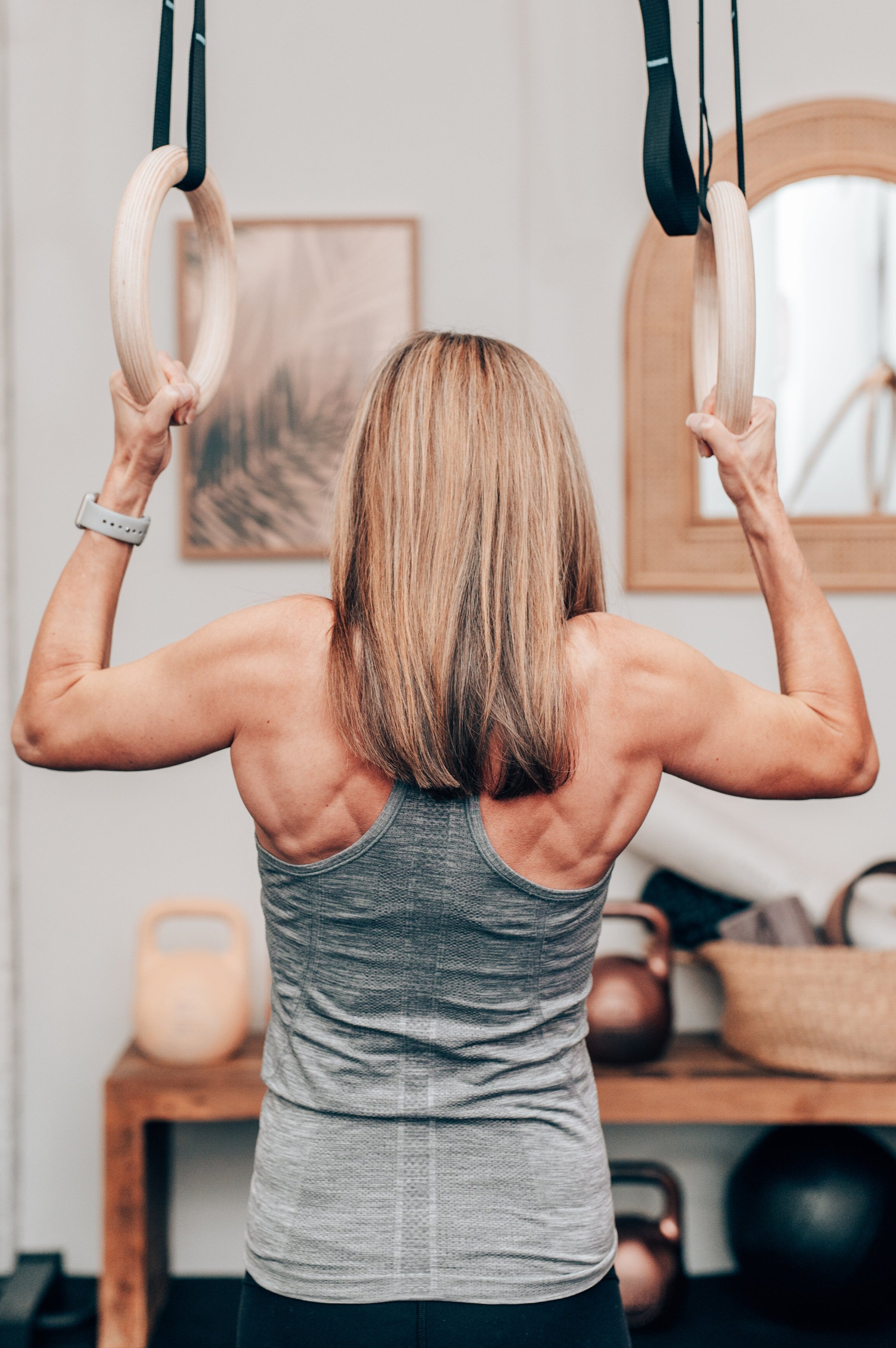Your first pull-up
Every modern fitness girl’s goal
Achieving your first body-weight pull-up is one of the most exciting milestones in your strength-training journey and is generally one of the most popular goals that girls come to me with!
5 reasons why we all want to do pull-ups
1. To be total bad-ass’ – obv. As pull-ups are super challenging, they are a real icon of strength, especially in women.
2. They don’t require any fancy equipment making them super handy. You just need a set of monkey bars in the local park, a pull-up bar installed at home, or a tree when you’re away on adventures (please check for spiders first).
3. More bang for your buck. They are a compound movement, targeting multiple muscle groups. In particular you’ll work the back, shoulders, chest and arms. If I had to pick a favourite upper body exercise, it would be pull-ups.
Pull-ups are to the upper body what squats are to the lower body.
4. There are so many variations to keep them fun and keep you progressing. I love mixing up the style of pull-ups that I’m doing in my training program to keep them interesting, challenging and to provide a different stimulus to my body. The variations might include changing the grip (underhand, overhand, neutral, thick grip, ropes, rings), adding weight, changing the tempo or speed in which I perform them, and so forth.
5. To save yourself in a zombie apolocypse
Now we know why pull-ups are great.
But why are they so hard for women?
1. Our physiology. It is just the way we are generally built and as a result, upper body exercises can be more challenging for women. But it doesn’t mean that we can’t get stronger upper bodies or that this factor will stop women from performing pull-ups. Although men do typically have more muscle mass in their upper bodies, women are quite capable of building significant amounts of muscle and getting very strong too, in fact women are often observed to be more resistant to muscular fatigue, so we might be better at getting lots of reps on pull-ups than the guys!
2. Poor grip strength. Another weakness that I see all the time from people new to strength training is poor grip strength and really sore hands when you first start trying to hang your own body weight. It is one of those things that require practice and adaptation
3. Over-reliance on assisted pull-ups - whether it’s a machine or a resistance band. I’m not saying that assisted pull-ups don’t have a place to support your training; they definitely do. But it’s often one of the factors holding you back from “real” pull-ups
4. Not staying tight enough. You need to maintain a strong and rigid position and engage the muscles that make up your mid-section across all strength training exercises, and I find this really important in learning pull-ups. If you’re wriggling around or have your legs out away from your body, you’re making it way harder for yourself by not engaging your deep stabilisers and anterior core muscles
5 tips to building up toward your first un-assisted pull-up:
1. Frequency. Practice makes perfect and pull-ups are no different.
2. Work on improving grip strength. My favourite go-to for newbies is to practice a bodyweight straight arm hang. These are generally really challenging if you haven’t tried to hold your own body weight for a few years! Avoid gloves.
3. Stop relying on the assisted pull-up machine. As I said, they have their place in the gym, but they won’t help you get the un-assisted pull-up. You need to build the strength and self-awareness of holding your body weight away from this machine. Bands are better, but still try to progress your pull-ups over time by reducing the resistance of the bands used.
4. SQUEEZE every part of your body, point your toes, and stay tight! Resist the swinging and work on staying still and controlled.
5. My favourite tip, and what really made the difference in my training when I was determined to do pull-ups, is incorporating negatives, or “eccentrics,” or, working harder on the way down. The easiest way to explain them is that once you have the strength to hold yourself up with your chin in line with the bar without dropping straight down, you slowly lower yourself back down to a hanging position. You should time this and try to increase the time that you can control this down-phase. Make your goal 30 seconds!
As I said, pull-ups would have to be my favourite upper body exercise for women. They definitely aren’t the be-all end-all, so even if you’re determined to get your first pull-up and want to practice them daily, you still need other exercises in your regime to remain structurally balanced, to avoid injury and to build up your other weak points.
We incorporate pull-ups (and all sorts of variations) into our programs for those who have this on their bucket list and would be happy to work on these with you too!
Book in for a consult at the studio, or get in touch if you would like to hear more about our coaching options.
x Jess
Head coach,
The Booty Parlour


